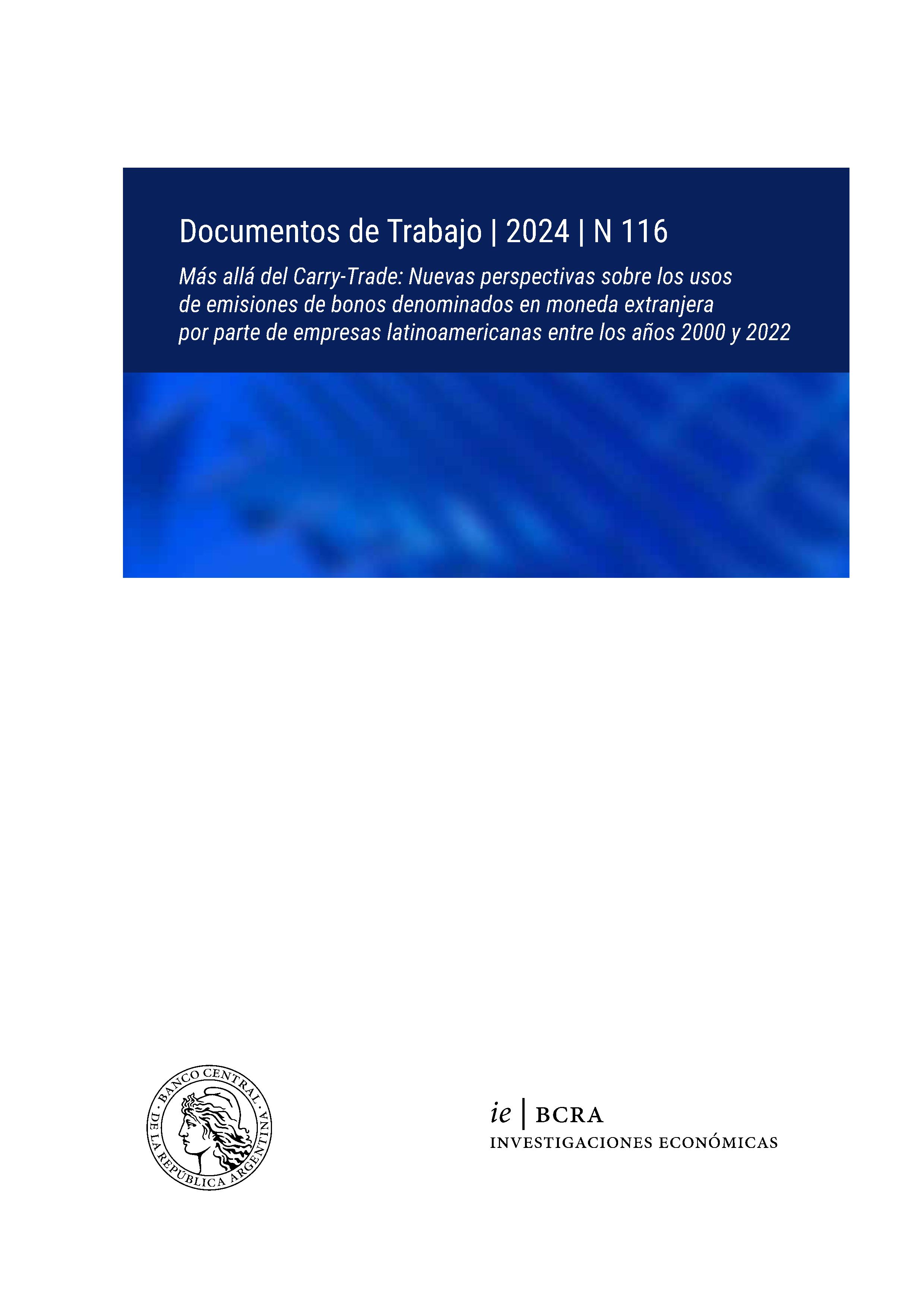Beyond the Carry Trade: New Perspectives on the Uses of Foreign Currency-Denominated Bond Issues by Latin American Companies between 2000 and 2022
Working papers | 2023 | N 116
Keywords:
Carry-Trade, Corporate Debt, Balance Sheets, Latin AmericaAbstract
Corporate bond issuances from emerging economies have been the main driver of the expansion of global debt following the 2008 global financial crisis. And while Asian countries have accumulated the largest volume of issuances, Latin American companies were the most dynamic, being the region with the highest growth in these issuances. This article studies the underlying motivations that lead non-financial companies in Latin America to place debt through bond issuance. Traditionally, the most accepted narrative in the literature on the subject has underlined carry-trade operations as the predominant factor from the issuance of bonds denominated in foreign currency. Adopting an innovative methodological approach, in this paper we question the set of ideas linked to this hypothesis. In this sense, we make two contributions, one methodological and one analytical. On the one hand, unlike from previous literature, instead of observing ex ante incentives based on global interest rate differentials, we use ex post profits from interest recorded in balance sheets at the company level. Following this methodology, we found no evidence to support the existence of carry-trade practices behind this issuances. On the contrary, we observed a high relationship between bond issuances and capital expenditures, an aspect that casts doubt on the notion of speculative motives behind the issuances. On the other hand, and as a second contribution, we analytically observed the alternative use of funds to manage their liabilities. The results suggest that Latin American companies have taken advantage of lax monetary policies at an international level to reduce short-term debt and extend maturity terms, as well as strategically increasing cash holdings on their balance sheets as a safeguard against potential changes in the global context.
JEL classification: F30, F34, F41


